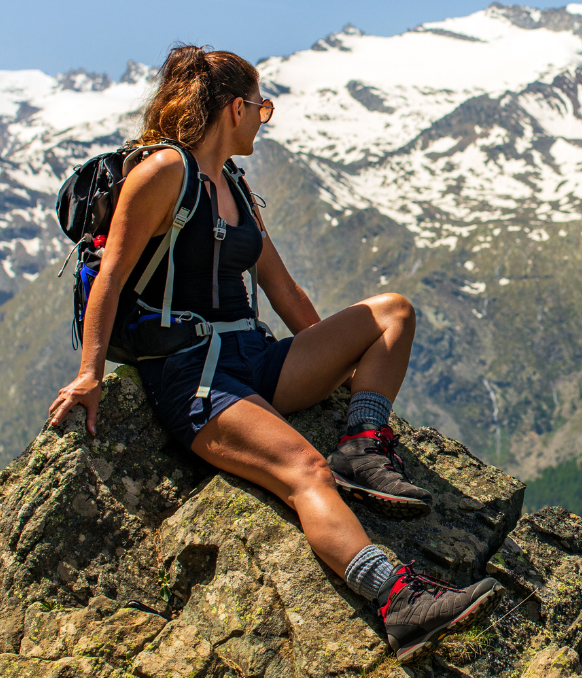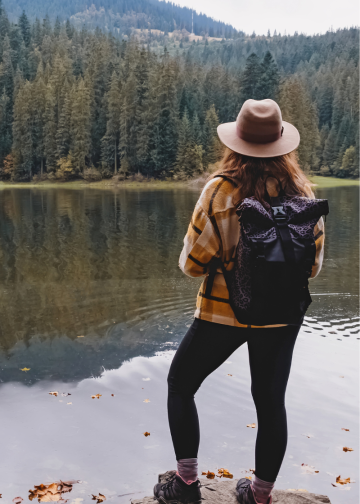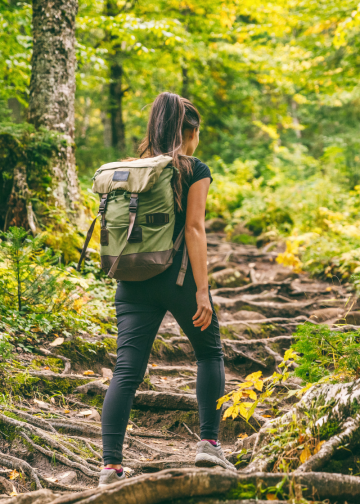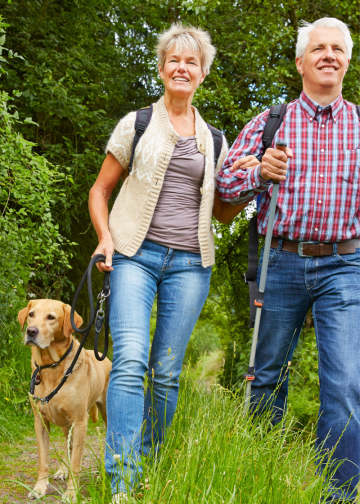Practice Makes Perfect
The Path Of Yoga. Embarking on a Yoga journey as a beginner can be exciting and overwhelming. Yoga offers many...

|
Getting your Trinity Audio player ready...
|

There’s something about lacing up your boots, stepping onto a trail, and breathing in that fresh air that just makes everything feel right. Maybe it’s the rhythm of your steps, the sound of the wind rustling through the trees, or the way the sun filters through the leaves. Hiking isn’t just about movement—it’s about connection, adventure, and the feeling of being completely alive. Whether it’s a peaceful solo walk or an invigorating trek with friends, there’s a kind of magic in putting one foot in front of the other and immersing yourself in the natural world.
If you’re like me and can’t resist a good hike, you know the thrill of discovering a hidden waterfall, reaching a summit, or simply feeling the tension of daily life melt away with every step. But to truly enjoy the experience, it helps to be prepared. In this guide, we’ll dive into the many benefits of hiking, what to bring, how to choose the right footwear, and the important safety considerations that will ensure your next adventure is not only enjoyable but also safe.
Hiking isn’t just about exercise—it’s an experience that nurtures both body and mind. Physically, hiking strengthens your muscles, improves cardiovascular fitness, and increases endurance. Unlike walking on a treadmill or jogging on pavement, hiking engages a variety of muscles as you navigate different terrains, from rocky inclines to forested trails. This constant variation helps build strength and flexibility while also improving balance and coordination.
But the benefits go far beyond the physical. Being outdoors is a natural mood booster, with studies showing that time spent in nature can reduce stress, anxiety, and even symptoms of depression. The combination of movement, fresh air, and natural beauty provides a reset for the nervous system, helping to clear the mind and foster a sense of peace. There’s also the undeniable sense of connection that comes from immersing yourself in nature—the way a towering forest can make you feel small in the best way, or how standing at the edge of a vast canyon can put life into perspective.

A well-packed bag can be the difference between a great hike and a frustrating one. The essentials start with water—hydration is key, so bring at least one liter per hour of hiking, especially in warm weather. Snacks are just as important, with high-energy options like nuts, trail mix, or protein bars keeping your energy levels steady.
Sun protection is a must, even on cloudy days. Sunglasses, sunscreen, and a hat can protect you from sunburn and glare. Navigation tools, such as a map, compass, or GPS device, are essential for ensuring you stay on course, particularly on longer or less-traveled trails. A basic first aid kit, including blister bandages, antiseptic wipes, and pain relievers, can save the day if minor injuries occur. Finally, always pack an extra layer, even if the forecast looks mild—weather can change quickly, especially in mountainous regions.
Your shoes are your foundation on the trail, and choosing the right pair can make all the difference. Hiking boots offer ankle support and traction, making them ideal for rougher trails or backpacking trips. If you’re tackling shorter hikes on well-maintained trails, trail runners or lightweight hiking shoes might be a better option, offering flexibility and comfort without the added bulk.
One common mistake is hitting the trail in brand-new boots without breaking them in. Stiff boots can cause blisters, making every step miserable. To avoid this, wear your hiking shoes around the house, on short walks, or even to run errands before committing to a long trek. Also, consider your socks—moisture-wicking materials help prevent blisters and keep your feet comfortable in any weather.
Hiking alone and hiking with others both have unique benefits, and choosing between them depends on your goals and comfort level. Solo hiking offers a special kind of freedom—it’s just you, the trail, and the quiet rhythm of your footsteps. It’s a chance to disconnect from the noise of daily life, reflect, and move at your own pace. However, hiking alone requires extra caution. Let someone know your route and expected return time, and always carry emergency supplies like a whistle, flashlight, and extra food.
Group hiking, on the other hand, adds a social element to the experience. It’s great for motivation, safety, and sharing the adventure with friends or family. In remote or unfamiliar areas, having a group provides extra security, especially in case of an emergency. The key to an enjoyable group hike is finding people with a similar pace and experience level—nothing dampens a hike more than feeling rushed or held back.

A little planning goes a long way in ensuring a smooth and enjoyable hike. Before heading out, research the trail—know the distance, elevation gain, and level of difficulty. Many trails have online reviews that can give insight into recent conditions, such as muddy paths or washed-out sections.
Checking the weather forecast is equally important. Getting caught in a sudden storm or unprepared for extreme temperatures can quickly turn a fun hike into a dangerous situation. Always let someone know your hiking plan, especially if you’re going alone. In remote areas, consider carrying a GPS tracker or emergency beacon in case of an accident. Lastly, start early in the day to take advantage of cooler temperatures, fewer crowds, and plenty of daylight to complete your hike.
Hiking is generally a safe activity, but nature is unpredictable, and risks should never be underestimated. Staying on marked trails helps prevent getting lost, a common issue that can lead to serious consequences in remote areas. If you’re hiking in wildlife-heavy regions, familiarize yourself with local animals and how to react if you encounter one. In bear country, carrying bear spray and making noise as you hike can help avoid unwanted encounters.
Injury prevention is also key—know your limits and listen to your body. If you start feeling lightheaded, dehydrated, or exhausted, take a break. Carrying emergency supplies like a whistle, flashlight, and a simple first aid kit can be lifesaving if something goes wrong. The best approach to safety is preparedness—knowing the risks and taking steps to mitigate them before they become problems.
The best hikes are the ones where you feel present, energized, and engaged with your surroundings. Pace yourself, take breaks, and give yourself permission to soak in the scenery. Rushing through a hike just to complete it misses the point—hiking is about the journey, not just the destination.
Respect nature by following “Leave No Trace” principles—pack out all trash, avoid picking plants, and stay on the trail to prevent erosion. If you’re hiking with others, be mindful of noise levels; some people hike for the peace and quiet. And most importantly, embrace the adventure. Whether it’s a short walk through a local park or an all-day trek to a breathtaking vista, every hike has something to offer.

If you’re a sucker for a good hike, you’re not alone. There’s something undeniably magical about the feeling of dirt underfoot, fresh air in your lungs, and the endless beauty of the outdoors stretching ahead. Whether you’re heading out for a solo trek or a group adventure, hiking is a simple yet powerful way to reconnect—with nature, with movement, and with yourself.
So, where’s your next hike? Let’s hit the trail.
photo © mark cvtkovie via canva.com
photo © thomas zsebok via canva.com
photo © maridov via canva.com
photo © peter berglund via canva.com
photo © imageblend via canva.com
The Path Of Yoga. Embarking on a Yoga journey as a beginner can be exciting and overwhelming. Yoga offers many...
Stress Causes Growth At Slow Harvest Yoga, we revel in rest, softness, and slowness, but we also know that growth...
Aging is often framed as a process of decline—losing strength, energy, and flexibility. But what if we shifted the...
Restorative Yoga: Have you ever been curious about Restorative Yoga but unsure what to expect? Maybe you’ve seen photos of...
Let’s Dance: Dance is one of the oldest forms of human expression, transcending language and culture to tell stories, celebrate...
Yoga Nidra-NSDR Deep rest is becoming a necessity rather than a luxury in a world that never seems to slow...
© 2025 Slow Harvest Yoga